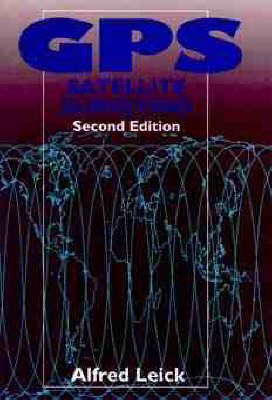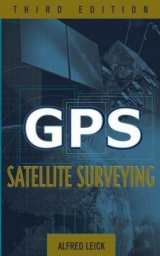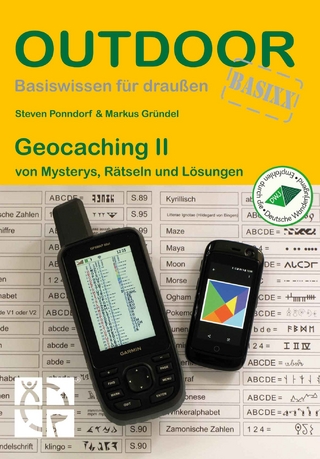
GPS Satellite Surveying
John Wiley & Sons Inc (Verlag)
978-0-471-30626-9 (ISBN)
- Titel erscheint in neuer Auflage
- Artikel merken
With the advent of the Global Positioning System (GPS), a new age has dawned for surveying and navigation. Using a network of orbiting satellites, GPS now makes it possible for ground-based technicians with hand-held monitors to determine their positions with a degree of precision previously unachievable by traditional surveying methods. GPS has the potential to revolutionize the entire practice of surveying, to give increased significance to the numerical records of surveyors, and to make available to many practicing surveyors measurement techniques that until recently were available to very few. To meet the needs of surveyors, engineers, and others for the latest, most complete information on this breakthrough technology, Alfred Leick has updated his classic introduction to the field. GPS Satellite Surveying, Second Edition, includes all the material that made the first edition the standard work on the subject and provides up-to-date information on the most recent developments.
Comprehensive and thorough in its presentation, GPS Satellite Surveying is designed to help the modern land information specialist gain full use of GPS surveying techniques and a firm understanding of the resulting measurements. The range of its coverage includes: Complete and mathematically rigorous theory of positioning with GPS that integrates astronomy, time, statistics, geodesy, and electronics Explanation of the geodetic foundations of GPS positioning Latest techniques of GPS positioning, such as ambiguity fixing on-the-fly (OTF) and rapid static Differential GPS (DGPS), with applications for aircraft navigation Full treatment of least-squares adjustment, including an extended discussion of the reliability of geodetic networks--material found in no other text Emphasis on elements common to surveying and precise navigation in order to provide a unified-theory perspective on GPS positioning Of related interest...GEOGRAPHICAL INFORMATION SYSTEMS: Principles and Applications, Volume 1: Principles, Volume 2: Applications Edited by David J. Maguire, Michael F. Goodchild, and David W.
Rhind Featuring the work of internationally renowned specialists, this benchmark reference is the most thorough synthesis of the concepts, viewpoints, and issues underlying GIS. Volume 1 describes the major intellectual, organizational, and technical forces integral to GIS development, as well as digital representation and technical, functional, organizational, and display issues. Volume 2 reviews national and international GIS programs in addition to its socioeconomic, environmental, and management applications. 1991 (0-470-21789-8) 1,096 pp. 2-volume set BOUNDARY CONTROL AND LEGAL PRINCIPLES Fourth Edition Curtis M. Brown, Walter G. Robillard, and Donald A. Wilson The Fourth Edition of this classic is marked by the precision of its summary of land boundary law and its clarity of presentation. It provides indispensable coverage of the science of measurements, the evaluation of evidence, and laws and customs that define boundaries. Includes time-tested coverage of the legal elements required to understand boundary location and the state and Federal laws that govern the usage of these legal elements.
Common law and legal principles, summarized from extensive research of court cases, are presented clearly and concisely. 1995 (0-471-08384-4) 450 pp. SOLVING PROBLEMS IN SURVEYING: A. Bannister and R. Baker Designed as an essential preparation guide to surveying exams, Solving Problems in Surveying features a wealth of problems drawn from past exams, each amply supported with basic theory. Not only are solutions and worked examples provided, but the book also includes simple computer programs, written in BASIC, covering topics frequently encountered. Featuring a clear methodology for problem solving mastery, Solving Problems in Surveying is essential for researchers and students in civil engineering. 1989 (0-470-21426-0) 332 pp.
ALFRED LEICK is Associate Professor in the Department of Civil Engineering at the University of Maine. From 1990 to 1993, Dr. Leick served on the Board of Directors of the American Association of Geodetic Surveying (AAGS) and has published and lectured widely on GPS. He received his PhD in geodetic science from Ohio State University.
Elements of Satellite Surveying; The Global Positioning System; Adjustment Computations; Least-Squares Adjustment Examples; Links to Physical Observations; The Three-Dimensional Geodetic Model; GPS Observables; Propagation Media, Multipath, and Phase Center; Processing GPS Carrier Phases; Network Adjustments; Ellipsoidal and Conformal Mapping Models; Useful Transformations; Datums, Standards, and Specifications; Appendices; References; Abbreviations for Frequently Used References; Indexes.
| Erscheint lt. Verlag | 28.3.1995 |
|---|---|
| Zusatzinfo | Ill. |
| Verlagsort | New York |
| Sprache | englisch |
| Maße | 162 x 242 mm |
| Gewicht | 941 g |
| Einbandart | gebunden |
| Themenwelt | Naturwissenschaften ► Geowissenschaften ► Geografie / Kartografie |
| Technik ► Bauwesen | |
| Technik ► Fahrzeugbau / Schiffbau | |
| ISBN-10 | 0-471-30626-6 / 0471306266 |
| ISBN-13 | 978-0-471-30626-9 / 9780471306269 |
| Zustand | Neuware |
| Haben Sie eine Frage zum Produkt? |
aus dem Bereich



